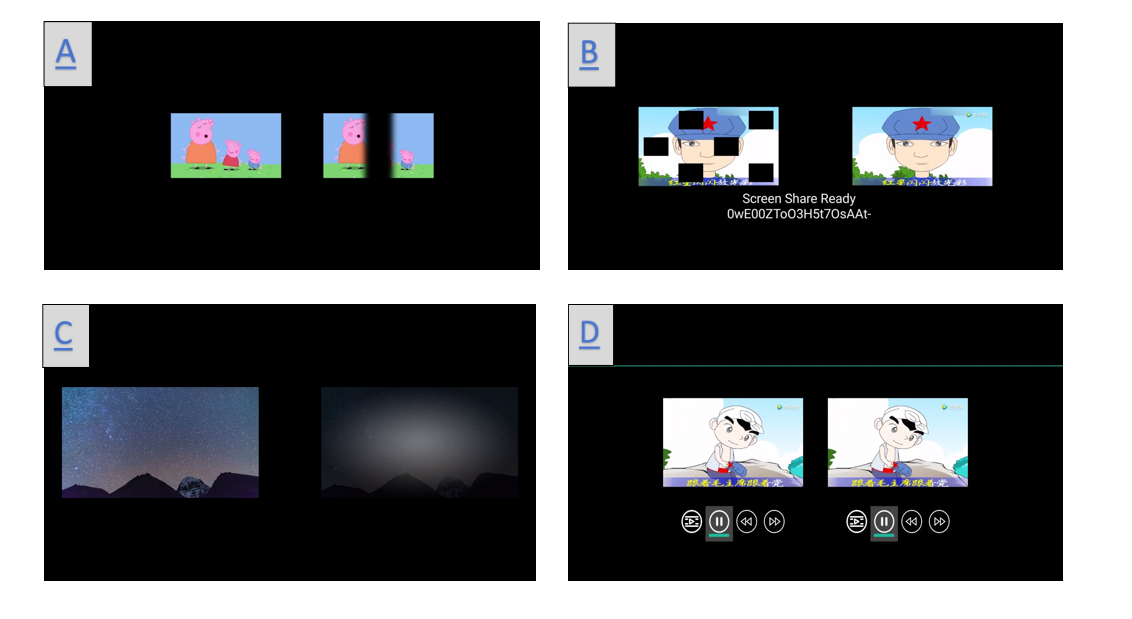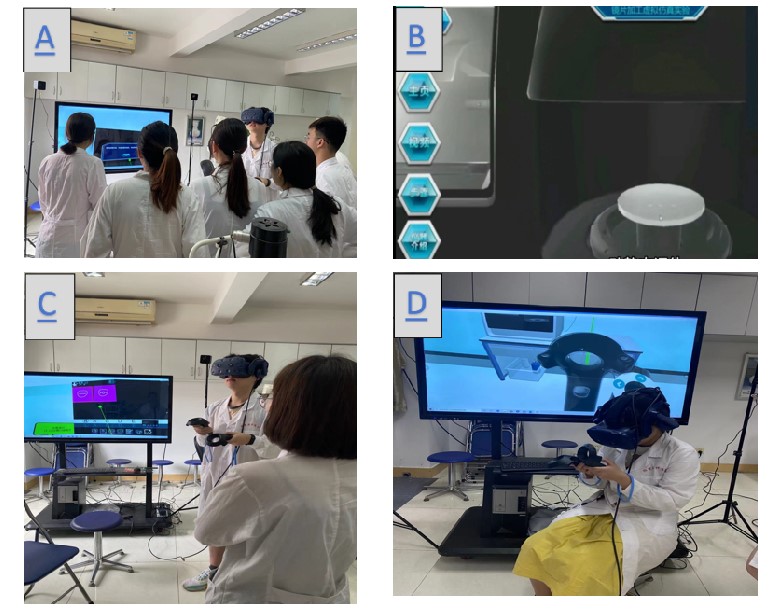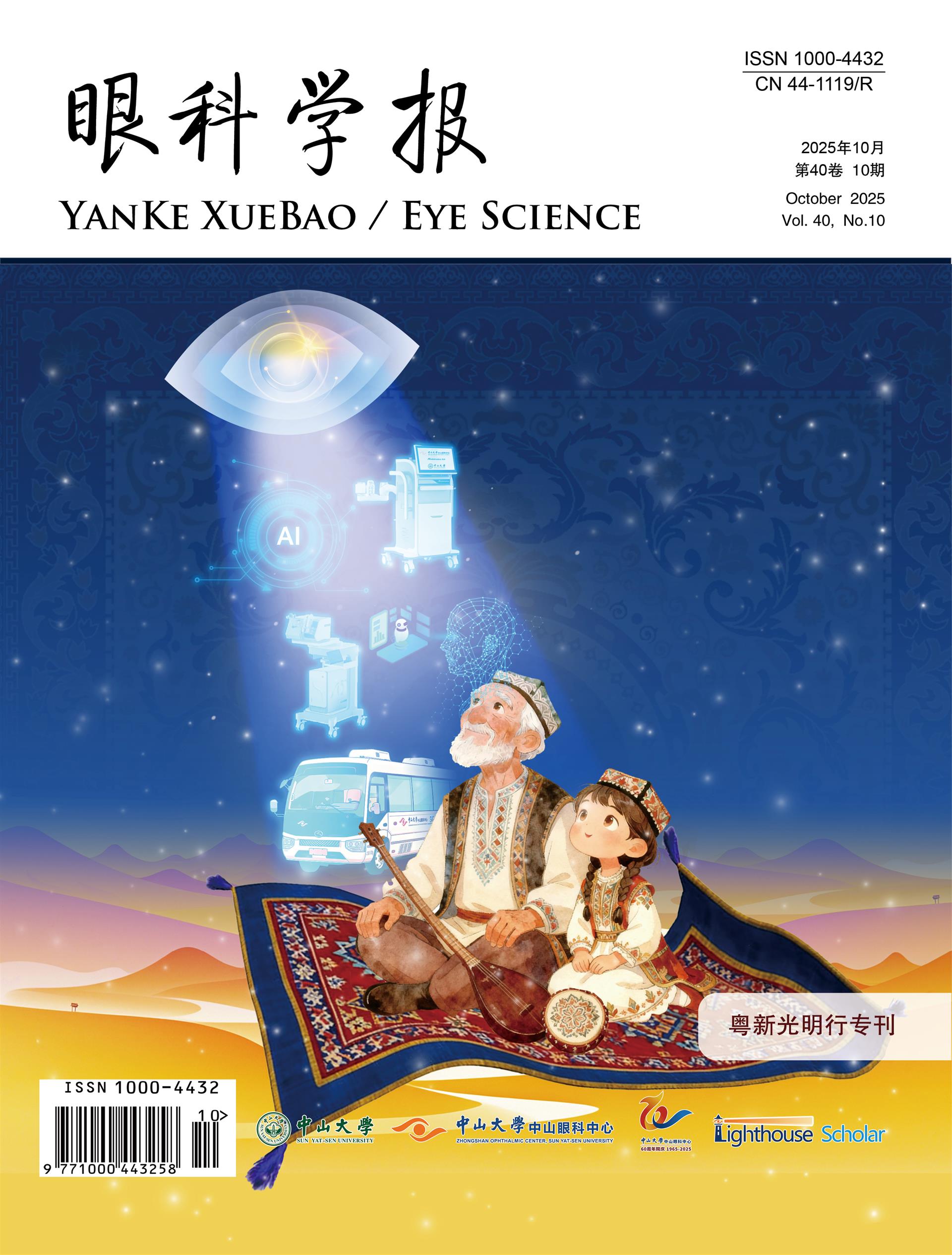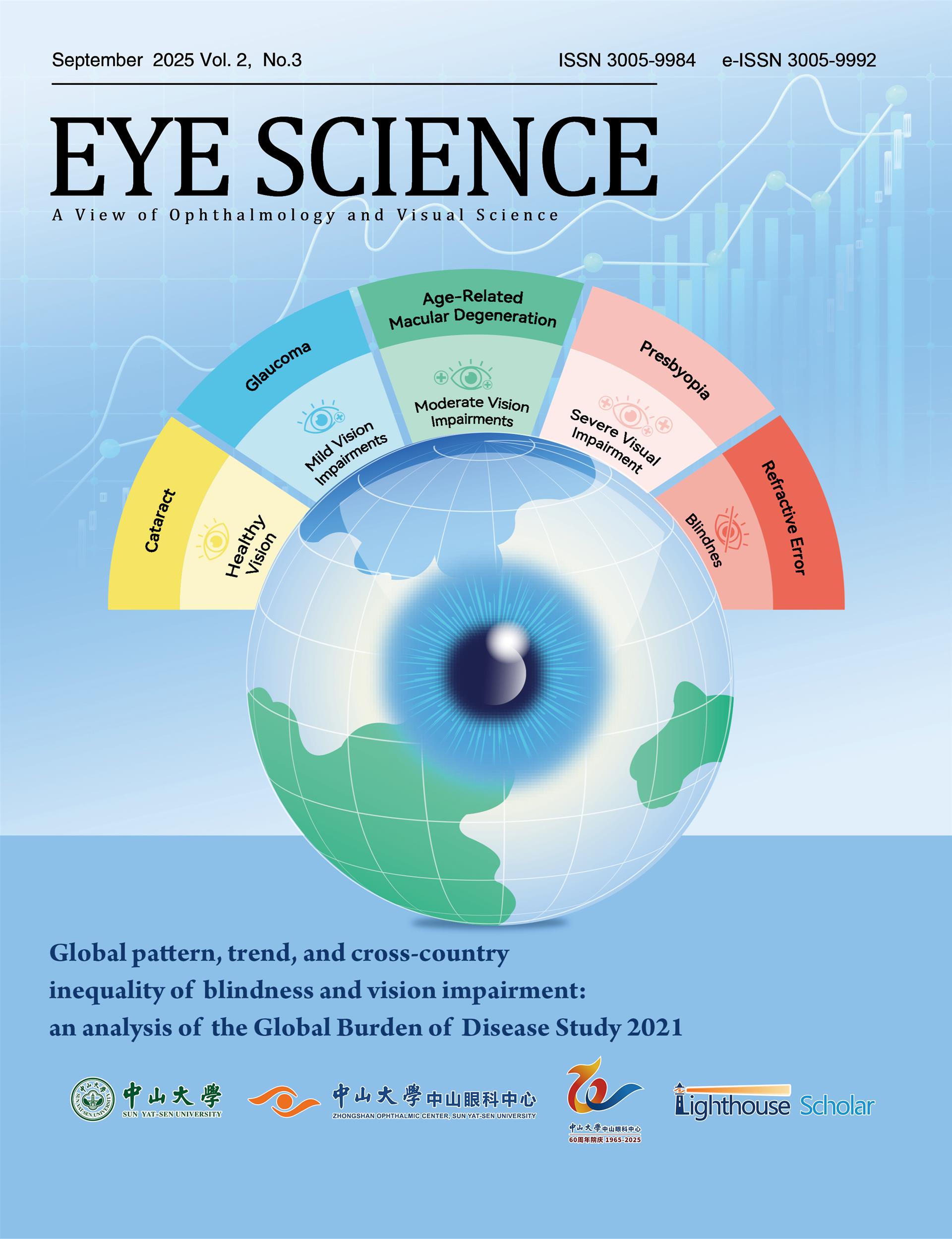1、Salatino A, Zavattaro C, Gammeri R, et al. Virtual reality rehabilitation for unilateral spatial neglect: a systematic review of immersive, semi-immersive and non-immersive techniques. Neurosci Biobehav Rev. 2023, 152: 105248. DOI: 10.1016/j.neubiorev.2023.105248. Salatino A, Zavattaro C, Gammeri R, et al. Virtual reality rehabilitation for unilateral spatial neglect: a systematic review of immersive, semi-immersive and non-immersive techniques. Neurosci Biobehav Rev. 2023, 152: 105248. DOI: 10.1016/j.neubiorev.2023.105248.
2、Wender C. Immersive virtual reality to relieve exercise-induced pain caused by aerobic cycling. Pain Manag. 2022, 12(5): 665-674. DOI: 10.2217/pmt-2021-0095. Wender C. Immersive virtual reality to relieve exercise-induced pain caused by aerobic cycling. Pain Manag. 2022, 12(5): 665-674. DOI: 10.2217/pmt-2021-0095.
3、MacKenzie CF, Harris TE, Shipper AG, et al. Virtual reality and haptic interfaces for civilian and military open trauma surgery training: a systematic review. Injury. 2022, 53(11): 3575-3585. DOI: 10.1016/j.injury.2022.08.003.MacKenzie CF, Harris TE, Shipper AG, et al. Virtual reality and haptic interfaces for civilian and military open trauma surgery training: a systematic review. Injury. 2022, 53(11): 3575-3585. DOI: 10.1016/j.injury.2022.08.003.
4、Yen HY, Chiu HL. Virtual reality exergames for improving older adults' cognition and depression: a systematic review and meta-analysis of randomized control trials. J Am Med Dir Assoc. 2021, 22(5): 995-1002. DOI: 10.1016/j.jamda.2021.03.009. Yen HY, Chiu HL. Virtual reality exergames for improving older adults' cognition and depression: a systematic review and meta-analysis of randomized control trials. J Am Med Dir Assoc. 2021, 22(5): 995-1002. DOI: 10.1016/j.jamda.2021.03.009.
5、Saneinia S, Zhou R, Gholizadeh A, et al. Immersive media-based tourism emerging challenge of VR addiction among generation Z. Front Public Health. 2022, 10: 833658. DOI: 10.3389/fpubh.2022.833658.Saneinia S, Zhou R, Gholizadeh A, et al. Immersive media-based tourism emerging challenge of VR addiction among generation Z. Front Public Health. 2022, 10: 833658. DOI: 10.3389/fpubh.2022.833658.
6、Plotzky C, Lindwedel U, Sorber M, et al. Virtual reality simulations in nurse education: a systematic mapping review. Nurse Educ Today. 2021, 101: 104868. DOI: 10.1016/j.nedt.2021.104868. Plotzky C, Lindwedel U, Sorber M, et al. Virtual reality simulations in nurse education: a systematic mapping review. Nurse Educ Today. 2021, 101: 104868. DOI: 10.1016/j.nedt.2021.104868.
7、Veneziano D, Cacciamani G, Rivas JG, et al. VR and machine learning: novel pathways in surgical hands-on training. Curr Opin Urol. 2020, 30(6): 817-822. DOI: 10.1097/MOU.0000000000000824. Veneziano D, Cacciamani G, Rivas JG, et al. VR and machine learning: novel pathways in surgical hands-on training. Curr Opin Urol. 2020, 30(6): 817-822. DOI: 10.1097/MOU.0000000000000824.
8、Demeco A, Zola L, Frizziero A, et al. Immersive virtual reality in post-stroke rehabilitation: a systematic review. Sensors (Basel), 2023, 23(3): 1712. DOI: 10.3390/s23031712. Demeco A, Zola L, Frizziero A, et al. Immersive virtual reality in post-stroke rehabilitation: a systematic review. Sensors (Basel), 2023, 23(3): 1712. DOI: 10.3390/s23031712.
9、Paul SK, Clark MA, Scott IU, et al. Virtual eye surgery training in ophthalmic graduate medical education. Can J Ophthalmol. 2018, 53(6): e218-e220. DOI: 10.1016/j.jcjo.2018.03.018. Paul SK, Clark MA, Scott IU, et al. Virtual eye surgery training in ophthalmic graduate medical education. Can J Ophthalmol. 2018, 53(6): e218-e220. DOI: 10.1016/j.jcjo.2018.03.018.
10、 Sun MT, Tran M, Singh K, et al. Glaucoma and myopia: diagnostic challenges. Biomolecules. 2023, 13(3): 562. DOI: 10.3390/biom13030562. Sun MT, Tran M, Singh K, et al. Glaucoma and myopia: diagnostic challenges. Biomolecules. 2023, 13(3): 562. DOI: 10.3390/biom13030562.
11、Guo DY, Shen YY, Zhu MM, et al. Virtual reality training improves accommodative facility and accommodative range. Int J Ophthalmol. 2022 Jul 18;15(7):1116-1121. DOI: 10.18240/ijo.2022.07.11.Guo DY, Shen YY, Zhu MM, et al. Virtual reality training improves accommodative facility and accommodative range. Int J Ophthalmol. 2022 Jul 18;15(7):1116-1121. DOI: 10.18240/ijo.2022.07.11.
12、Shi Y. Effect of atropine eye drops combined with VR-based binocular visual function balance training for prevention and control of juvenile myopia. Evid Based Complement Alternat Med. 2022, 2022: 4159996. DOI: 10.1155/2022/4159996.Shi Y. Effect of atropine eye drops combined with VR-based binocular visual function balance training for prevention and control of juvenile myopia. Evid Based Complement Alternat Med. 2022, 2022: 4159996. DOI: 10.1155/2022/4159996.
13、Li Y, Yip MYT, Ting DSW, et al. Artificial intelligence and digital solutions for myopia. Taiwan J Ophthalmol. 2023, 13(2): 142-150. DOI: 10.4103/tjo.TJO-D-23-00032. Li Y, Yip MYT, Ting DSW, et al. Artificial intelligence and digital solutions for myopia. Taiwan J Ophthalmol. 2023, 13(2): 142-150. DOI: 10.4103/tjo.TJO-D-23-00032.
14、Zhao%20F%2C%20Chen%20L%2C%20Ma%20H%2C%20et%20al.%20Virtual%20reality%3A%20a%20possible%20approach%20to%20myopia%20prevention%20and%20control%3F%20Med%20Hypotheses.%202018%2C%20121%3A%201-3.%20DOI%3A%2010.1016%2Fj.mehy.2018.09.021.%20Zhao%20F%2C%20Chen%20L%2C%20Ma%20H%2C%20et%20al.%20Virtual%20reality%3A%20a%20possible%20approach%20to%20myopia%20prevention%20and%20control%3F%20Med%20Hypotheses.%202018%2C%20121%3A%201-3.%20DOI%3A%2010.1016%2Fj.mehy.2018.09.021.%20
15、Lee SH, Kim M, Kim H, et al. Visual fatigue induced by watching virtual reality device and the effect of anisometropia. Ergonomics. 2021, 64(12): 1522-1531. DOI: 10.1080/00140139.2021.1957158. Lee SH, Kim M, Kim H, et al. Visual fatigue induced by watching virtual reality device and the effect of anisometropia. Ergonomics. 2021, 64(12): 1522-1531. DOI: 10.1080/00140139.2021.1957158.
16、Bui Quoc E, Kulp MT, Burns JG, et al. Amblyopia: a review of unmet needs, current treatment options, and emerging therapies. Surv Ophthalmol. 2023, 68(3): 507-525. DOI: 10.1016/j.survophthal.2023.01.001. Bui Quoc E, Kulp MT, Burns JG, et al. Amblyopia: a review of unmet needs, current treatment options, and emerging therapies. Surv Ophthalmol. 2023, 68(3): 507-525. DOI: 10.1016/j.survophthal.2023.01.001.
17、Rajavi Z, Soltani A, Vakili A, et al. Virtual reality game playing in amblyopia therapy: a randomized clinical trial. J Pediatr Ophthalmol Strabismus. 2021, 58(3): 154-160. DOI: 10.3928/01913913-20210108-02. Rajavi Z, Soltani A, Vakili A, et al. Virtual reality game playing in amblyopia therapy: a randomized clinical trial. J Pediatr Ophthalmol Strabismus. 2021, 58(3): 154-160. DOI: 10.3928/01913913-20210108-02.
18、Molina-Martín A, Leal-Vega L, de Fez D, et al. Amblyopia treatment through immersive virtual reality: a preliminary experience in anisometropic children. Vision (Basel), 2023, 7(2): 42. DOI: 10.3390/vision7020042.Molina-Martín A, Leal-Vega L, de Fez D, et al. Amblyopia treatment through immersive virtual reality: a preliminary experience in anisometropic children. Vision (Basel), 2023, 7(2): 42. DOI: 10.3390/vision7020042.
19、Leal%20Vega%20L%2C%20Pi%C3%B1ero%20DP%2C%20Hern%C3%A1ndez%20Rodr%C3%ADguez%20CJ%2C%20et%20al.%20Study%20protocol%20for%20a%20randomized%20controlled%20trial%20of%20the%20NEIVATECH%20virtual%20reality%20system%20to%20improve%20visual%20function%20in%20children%20with%20anisometropic%20amblyopia.%20BMC%20Ophthalmol.%202022%2C%2022(1)%3A%20253.%20DOI%3A%2010.1186%2Fs12886-022-02466-z.%20Leal%20Vega%20L%2C%20Pi%C3%B1ero%20DP%2C%20Hern%C3%A1ndez%20Rodr%C3%ADguez%20CJ%2C%20et%20al.%20Study%20protocol%20for%20a%20randomized%20controlled%20trial%20of%20the%20NEIVATECH%20virtual%20reality%20system%20to%20improve%20visual%20function%20in%20children%20with%20anisometropic%20amblyopia.%20BMC%20Ophthalmol.%202022%2C%2022(1)%3A%20253.%20DOI%3A%2010.1186%2Fs12886-022-02466-z.%20
20、Simon-Martinez C, Antoniou MP, Bouthour W, et al. Stereoptic serious games as a visual rehabilitation tool for individuals with a residual amblyopia (AMBER trial): a protocol for a crossover randomized controlled trial. BMC Ophthalmol. 2023, 23(1): 220. DOI: 10.1186/s12886-023-02944-y. Simon-Martinez C, Antoniou MP, Bouthour W, et al. Stereoptic serious games as a visual rehabilitation tool for individuals with a residual amblyopia (AMBER trial): a protocol for a crossover randomized controlled trial. BMC Ophthalmol. 2023, 23(1): 220. DOI: 10.1186/s12886-023-02944-y.
21、Elhusseiny AM, Bishop K, Staffa SJ, et al. Virtual reality prototype for binocular therapy in older children and adults with amblyopia. J Am Assoc Pediatr Ophthalmol Strabismus. 2021, 25(4): 217.e1-217.e6. DOI: 10.1016/j.jaapos.2021.03.008. Elhusseiny AM, Bishop K, Staffa SJ, et al. Virtual reality prototype for binocular therapy in older children and adults with amblyopia. J Am Assoc Pediatr Ophthalmol Strabismus. 2021, 25(4): 217.e1-217.e6. DOI: 10.1016/j.jaapos.2021.03.008.
22、Li L, Xue H, Lai T, et al. Comparison of compliance among patients with pediatric amblyopia undergoing virtual reality-based and traditional patching method training. Front Public Health. 2022, 10: 1037412. DOI: 10.3389/fpubh.2022.1037412. Li L, Xue H, Lai T, et al. Comparison of compliance among patients with pediatric amblyopia undergoing virtual reality-based and traditional patching method training. Front Public Health. 2022, 10: 1037412. DOI: 10.3389/fpubh.2022.1037412.
23、Tan F, Yang X, Fan Y, et al. The study of short-term plastic visual perceptual training based on virtual and augmented reality technology in amblyopia. J Ophthalmol. 2022, 2022: 2826724. DOI: 10.1155/2022/2826724. Tan F, Yang X, Fan Y, et al. The study of short-term plastic visual perceptual training based on virtual and augmented reality technology in amblyopia. J Ophthalmol. 2022, 2022: 2826724. DOI: 10.1155/2022/2826724.
24、Halicka J, Bittsansky M, Sivak S, et al. Virtual reality visual training in an adult patient with anisometropic amblyopia: visual and functional magnetic resonance outcomes. Vision (Basel), 2021, 5(2): 22. DOI: 10.3390/vision5020022.Halicka J, Bittsansky M, Sivak S, et al. Virtual reality visual training in an adult patient with anisometropic amblyopia: visual and functional magnetic resonance outcomes. Vision (Basel), 2021, 5(2): 22. DOI: 10.3390/vision5020022.
25、Hali%C4%8Dka%20J%2C%20Sahatqija%20E%2C%20Kras%C5%88ansk%C3%BD%20M%2C%20et%20al.%20Visual%20Training%20in%20Virtual%20Reality%20in%20Adult%20Patients%20with%20Anisometric%20Amblyopia.%20Ceska%20a%20Slovenska%20Oftalmologie%3A%20Casopis%20Ceske%20Oftalmologicke%20Spolecnosti%20a%20Slovenske%20Oftalmologicke%20Spolecnosti.%202020%2C%2076(1)%3A%2024-28.Hali%C4%8Dka%20J%2C%20Sahatqija%20E%2C%20Kras%C5%88ansk%C3%BD%20M%2C%20et%20al.%20Visual%20Training%20in%20Virtual%20Reality%20in%20Adult%20Patients%20with%20Anisometric%20Amblyopia.%20Ceska%20a%20Slovenska%20Oftalmologie%3A%20Casopis%20Ceske%20Oftalmologicke%20Spolecnosti%20a%20Slovenske%20Oftalmologicke%20Spolecnosti.%202020%2C%2076(1)%3A%2024-28.
26、Zhang H, Yang SH, Chen T, et al. The effect of virtual reality technology in children after surgery for concomitant strabismus. Indian J Ophthalmol. 2023, 71(2): 625-630. DOI: 10.4103/ijo.IJO_1505_22. Zhang H, Yang SH, Chen T, et al. The effect of virtual reality technology in children after surgery for concomitant strabismus. Indian J Ophthalmol. 2023, 71(2): 625-630. DOI: 10.4103/ijo.IJO_1505_22.
27、Yang X, Fan Y, Chu H, et al. Preliminary study of short-term visual perceptual training based on virtual reality and augmented reality in postoperative strabismic patients. Cyberpsychol Behav Soc Netw. 2022, 25(7): 465-470. DOI: 10.1089/cyber.2022.0113. Yang X, Fan Y, Chu H, et al. Preliminary study of short-term visual perceptual training based on virtual reality and augmented reality in postoperative strabismic patients. Cyberpsychol Behav Soc Netw. 2022, 25(7): 465-470. DOI: 10.1089/cyber.2022.0113.
28、Miao Y, Jeon JY, Park G, et al. Virtual reality-based measurement of ocular deviation in strabismus. Comput Methods Programs Biomed. 2020, 185: 105132. DOI: 10.1016/j.cmpb.2019.105132.Miao Y, Jeon JY, Park G, et al. Virtual reality-based measurement of ocular deviation in strabismus. Comput Methods Programs Biomed. 2020, 185: 105132. DOI: 10.1016/j.cmpb.2019.105132.
29、Moon HS, Yoon HJ, Park SW, et al. Usefulness of virtual reality-based training to diagnose strabismus. Sci Rep. 2021, 11(1): 5891. DOI: 10.1038/s41598-021-85265-8. Moon HS, Yoon HJ, Park SW, et al. Usefulness of virtual reality-based training to diagnose strabismus. Sci Rep. 2021, 11(1): 5891. DOI: 10.1038/s41598-021-85265-8.
30、 Mehringer WA, Gerhard Wirth M, Gradl S, et al. An image-based method for measuring strabismus in virtual reality[C]//2020 IEEE International Symposium on Mixed and Augmented Reality Adjunct (ISMAR-Adjunct). November 9-13, 2020. Recife, Brazil. IEEE. 2020: 5-12. DOI: 10.1109/ismar-adjunct51615.2020.00018. Mehringer WA, Gerhard Wirth M, Gradl S, et al. An image-based method for measuring strabismus in virtual reality[C]//2020 IEEE International Symposium on Mixed and Augmented Reality Adjunct (ISMAR-Adjunct). November 9-13, 2020. Recife, Brazil. IEEE. 2020: 5-12. DOI: 10.1109/ismar-adjunct51615.2020.00018.
31、Lin JC, Yu Z, Scott IU, et al. Virtual reality training for cataract surgery operating performance in ophthalmology trainees. Cochrane Database Syst Rev. 2021, 12(12): CD014953. DOI: 10.1002/14651858.CD014953.pub2. Lin JC, Yu Z, Scott IU, et al. Virtual reality training for cataract surgery operating performance in ophthalmology trainees. Cochrane Database Syst Rev. 2021, 12(12): CD014953. DOI: 10.1002/14651858.CD014953.pub2.
32、Williams M. Virtual reality in ophthalmology education: simulating pupil examination. Eye (Lond). 2022, 36(11): 2084-2085. DOI: 10.1038/s41433-022-02078-3. Williams M. Virtual reality in ophthalmology education: simulating pupil examination. Eye (Lond). 2022, 36(11): 2084-2085. DOI: 10.1038/s41433-022-02078-3.
33、Deuchler S, Sebode C, Ackermann H, et al. Combination of simulation-based and online learning in ophthalmology: efficiency of simulation in combination with independent online learning within the framework of EyesiNet in student education. Ophthalmologe. 2022, 119(1): 20-29. DOI: 10.1007/s00347-020-01313-0. Deuchler S, Sebode C, Ackermann H, et al. Combination of simulation-based and online learning in ophthalmology: efficiency of simulation in combination with independent online learning within the framework of EyesiNet in student education. Ophthalmologe. 2022, 119(1): 20-29. DOI: 10.1007/s00347-020-01313-0.
34、Chatziralli I, Ventura CV, Touhami S, et al. Transforming ophthalmic education into virtual learning during COVID-19 pandemic: a global perspective. Eye (Lond), 2021, 35(5): 1459-1466. DOI: 10.1038/s41433-020-1080-0. Chatziralli I, Ventura CV, Touhami S, et al. Transforming ophthalmic education into virtual learning during COVID-19 pandemic: a global perspective. Eye (Lond), 2021, 35(5): 1459-1466. DOI: 10.1038/s41433-020-1080-0.
35、Cicinelli MV, Buchan JC, Nicholson M, et al. Cataracts. Lancet. 2023, 401(10374): 377-389. DOI: 10.1016/S0140-6736(22)01839-6. Cicinelli MV, Buchan JC, Nicholson M, et al. Cataracts. Lancet. 2023, 401(10374): 377-389. DOI: 10.1016/S0140-6736(22)01839-6.
36、Gali HE, Sella R, Afshari NA. Cataract grading systems: a review of past and present. Curr Opin Ophthalmol. 2019, 30(1): 13-18. DOI: 10.1097/ICU.0000000000000542. Gali HE, Sella R, Afshari NA. Cataract grading systems: a review of past and present. Curr Opin Ophthalmol. 2019, 30(1): 13-18. DOI: 10.1097/ICU.0000000000000542.
37、Rothschild P, Richardson A, Beltz J, et al. Effect of virtual reality simulation training on real-life cataract surgery complications: systematic literature review. J Cataract Refract Surg. 2021, 47(3): 400-406. DOI: 10.1097/j.jcrs.0000000000000323. Rothschild P, Richardson A, Beltz J, et al. Effect of virtual reality simulation training on real-life cataract surgery complications: systematic literature review. J Cataract Refract Surg. 2021, 47(3): 400-406. DOI: 10.1097/j.jcrs.0000000000000323.
38、Nayer ZH, Murdock B, Dharia IP, et al. Predictive and construct validity of virtual reality cataract surgery simulators. J Cataract Refract Surg. 2020, 46(6): 907-912. DOI: 10.1097/j.jcrs.0000000000000137. Nayer ZH, Murdock B, Dharia IP, et al. Predictive and construct validity of virtual reality cataract surgery simulators. J Cataract Refract Surg. 2020, 46(6): 907-912. DOI: 10.1097/j.jcrs.0000000000000137.
39、Jaud C, Salleron J, Cisse C, et al. EyeSi Surgical Simulator: validation of a proficiency-based test for assessment of vitreoretinal surgical skills. Acta Ophthalmol. 2021, 99(4): 390-396. DOI: 10.1111/aos.14628. Jaud C, Salleron J, Cisse C, et al. EyeSi Surgical Simulator: validation of a proficiency-based test for assessment of vitreoretinal surgical skills. Acta Ophthalmol. 2021, 99(4): 390-396. DOI: 10.1111/aos.14628.
40、Sikder S, Luo J, Banerjee PP, et al. The use of a virtual reality surgical simulator for cataract surgical skill assessment with 6 months of intervening operating room experience. Clin Ophthalmol. 2015, 9: 141-149. DOI: 10.2147/OPTH.S69970. Sikder S, Luo J, Banerjee PP, et al. The use of a virtual reality surgical simulator for cataract surgical skill assessment with 6 months of intervening operating room experience. Clin Ophthalmol. 2015, 9: 141-149. DOI: 10.2147/OPTH.S69970.
41、Nair AG, Ahiwalay C, Bacchav AE, et al. Effectiveness of simulation-based training for manual small incision cataract surgery among novice surgeons: a randomized controlled trial. Sci Rep. 2021, 11(1): 10945. DOI: 10.1038/s41598-021-90410-4. Nair AG, Ahiwalay C, Bacchav AE, et al. Effectiveness of simulation-based training for manual small incision cataract surgery among novice surgeons: a randomized controlled trial. Sci Rep. 2021, 11(1): 10945. DOI: 10.1038/s41598-021-90410-4.
42、Nair AG, Ahiwalay C, Bacchav AE, et al. Assessment of a high-fidelity, virtual reality-based, manual small-incision cataract surgery simulator: a face and content validity study. Indian J Ophthalmol. 2022, 70(11): 4010-4015. DOI: 10.4103/ijo.IJO_1593_22. Nair AG, Ahiwalay C, Bacchav AE, et al. Assessment of a high-fidelity, virtual reality-based, manual small-incision cataract surgery simulator: a face and content validity study. Indian J Ophthalmol. 2022, 70(11): 4010-4015. DOI: 10.4103/ijo.IJO_1593_22.
43、Ferris JD, Donachie PH, Johnston RL, et al. Royal College of Ophthalmologists' National Ophthalmology Database study of cataract surgery: report 6. The impact of EyeSi virtual reality training on complications rates of cataract surgery performed by first and second year trainees. Br J Ophthalmol. 2020, 104(3): 324-329. DOI: 10.1136/bjophthalmol-2018-313817. Ferris JD, Donachie PH, Johnston RL, et al. Royal College of Ophthalmologists' National Ophthalmology Database study of cataract surgery: report 6. The impact of EyeSi virtual reality training on complications rates of cataract surgery performed by first and second year trainees. Br J Ophthalmol. 2020, 104(3): 324-329. DOI: 10.1136/bjophthalmol-2018-313817.
44、Adnane I, Chahbi M, Elbelhadji M. Virtual simulation for learning cataract surgery. J Fr Ophtalmol. 2020, 43(4): 334-340. DOI: 10.1016/j.jfo.2019.08.006. Adnane I, Chahbi M, Elbelhadji M. Virtual simulation for learning cataract surgery. J Fr Ophtalmol. 2020, 43(4): 334-340. DOI: 10.1016/j.jfo.2019.08.006.
45、%20Eltanamly%20RM%2C%20Elmekawey%20H%2C%20Youssef%20MM%2C%20et%20al.%20Can%20virtual%20reality%20surgical%20simulator%20improve%20the%20function%20of%20the%20non-dominant%20hand%20in%20ophthalmic%20surgeons%3F.%20Indian%20J%20Ophthalmol.%202022%2C%2070(5)%3A%201795-1799.%20DOI%3A%2010.4103%2Fijo.IJO_2652_21.%20%20Eltanamly%20RM%2C%20Elmekawey%20H%2C%20Youssef%20MM%2C%20et%20al.%20Can%20virtual%20reality%20surgical%20simulator%20improve%20the%20function%20of%20the%20non-dominant%20hand%20in%20ophthalmic%20surgeons%3F.%20Indian%20J%20Ophthalmol.%202022%2C%2070(5)%3A%201795-1799.%20DOI%3A%2010.4103%2Fijo.IJO_2652_21.%20
46、Mathis T, Mouchel R, Malecaze J, et al. Evaluation of the time required to complete a cataract training program on EyeSi surgical simulator during the first-year residency. Eur J Ophthalmol. 2022: 11206721221136322. DOI: 10.1177/11206721221136322. Mathis T, Mouchel R, Malecaze J, et al. Evaluation of the time required to complete a cataract training program on EyeSi surgical simulator during the first-year residency. Eur J Ophthalmol. 2022: 11206721221136322. DOI: 10.1177/11206721221136322.
47、Jacobsen MF, Konge L, Bach-Holm D, et al. Correlation of virtual reality performance with real-life cataract surgery performance. J Cataract Refract Surg. 2019, 45(9): 1246-1251. DOI: 10.1016/j.jcrs.2019.04.007.Jacobsen MF, Konge L, Bach-Holm D, et al. Correlation of virtual reality performance with real-life cataract surgery performance. J Cataract Refract Surg. 2019, 45(9): 1246-1251. DOI: 10.1016/j.jcrs.2019.04.007.
48、Adatia FA, González-Saldivar G, Chow DR. Effects of sleep deprivation, non-dominant hand employment, caffeine and alcohol intake during surgical performance: lessons learned from the retina eyesi virtual reality surgical simulator. Transl Vis Sci Technol. 2022, 11(8): 16. DOI: 10.1167/tvst.11.8.16. Adatia FA, González-Saldivar G, Chow DR. Effects of sleep deprivation, non-dominant hand employment, caffeine and alcohol intake during surgical performance: lessons learned from the retina eyesi virtual reality surgical simulator. Transl Vis Sci Technol. 2022, 11(8): 16. DOI: 10.1167/tvst.11.8.16.
49、de Smet MD, de Jonge N, Iannetta D, et al. Human/robotic interaction: vision limits performance in simulated vitreoretinal surgery. Acta Ophthalmol. 2019, 97(7): 672-678. DOI: 10.1111/aos.14003.de Smet MD, de Jonge N, Iannetta D, et al. Human/robotic interaction: vision limits performance in simulated vitreoretinal surgery. Acta Ophthalmol. 2019, 97(7): 672-678. DOI: 10.1111/aos.14003.
50、Soni T, Kohli P. Commentary: Simulators for vitreoretinal surgical training. Indian J Ophthalmol. 2022, 70(5): 1793-1794. DOI: 10.4103/ijo.IJO_639_22. Soni T, Kohli P. Commentary: Simulators for vitreoretinal surgical training. Indian J Ophthalmol. 2022, 70(5): 1793-1794. DOI: 10.4103/ijo.IJO_639_22.
51、la%20Cour%20M%2C%20Thomsen%20ASS%2C%20Alberti%20M%2C%20et%20al.%20Simulators%20in%20the%20training%20of%20surgeons%3A%20is%20it%20worth%20the%20investment%20in%20money%20and%20time%3F2018%20jules%20gonin%20lecture%20of%20the%20retina%20research%20foundation.%20Graefes%20Arch%20Clin%20Exp%20Ophthalmol.%202019%2C%20257(5)%3A%20877-881.%20DOI%3A%2010.1007%2Fs00417-019-04244-y.%20la%20Cour%20M%2C%20Thomsen%20ASS%2C%20Alberti%20M%2C%20et%20al.%20Simulators%20in%20the%20training%20of%20surgeons%3A%20is%20it%20worth%20the%20investment%20in%20money%20and%20time%3F2018%20jules%20gonin%20lecture%20of%20the%20retina%20research%20foundation.%20Graefes%20Arch%20Clin%20Exp%20Ophthalmol.%202019%2C%20257(5)%3A%20877-881.%20DOI%3A%2010.1007%2Fs00417-019-04244-y.%20
52、Seddon IA, Rahimy E, Miller JB, et al. Feasibility and potential for real-time 3D vitreoretinal surgery telementoring. Retina. 2023, 43(12): 2162-2165. DOI: 10.1097/iae.0000000000003656. Seddon IA, Rahimy E, Miller JB, et al. Feasibility and potential for real-time 3D vitreoretinal surgery telementoring. Retina. 2023, 43(12): 2162-2165. DOI: 10.1097/iae.0000000000003656.
53、Forslund Jacobsen M, Konge L, Alberti M, et al. Robot-assisted vitreoretinal surgery improves surgical accuracy compared with manual surgery: a Randomized Trial in a Simulated Setting. Retina. 2020, 40(11): 2091-2098. DOI: 10.1097/IAE.0000000000002720. Forslund Jacobsen M, Konge L, Alberti M, et al. Robot-assisted vitreoretinal surgery improves surgical accuracy compared with manual surgery: a Randomized Trial in a Simulated Setting. Retina. 2020, 40(11): 2091-2098. DOI: 10.1097/IAE.0000000000002720.
54、Ermolaev AP, Erichev VP, Antonov AA, et al. Assessing retinal photosensitivity in patients with central vision impairment using a portable perimeter (a preliminary report). Vestn Oftalmol. 2019, 135(3): 46-54. DOI: 10.17116/oftalma201913503146. Ermolaev AP, Erichev VP, Antonov AA, et al. Assessing retinal photosensitivity in patients with central vision impairment using a portable perimeter (a preliminary report). Vestn Oftalmol. 2019, 135(3): 46-54. DOI: 10.17116/oftalma201913503146.
55、Tsapakis S, Papaconstantinou D, Diagourtas A, et al. Visual field examination method using virtual reality glasses compared with the Humphrey perimeter. Clin Ophthalmol. 2017, 11: 1431-1443. DOI: 10.2147/OPTH.S131160.Tsapakis S, Papaconstantinou D, Diagourtas A, et al. Visual field examination method using virtual reality glasses compared with the Humphrey perimeter. Clin Ophthalmol. 2017, 11: 1431-1443. DOI: 10.2147/OPTH.S131160.
56、Chen YT, Yeh PH, Cheng YC, et al. Application and validation of LUXIE: a newly developed virtual reality perimetry software. J Pers Med. 2022, 12(10): 1560. DOI: 10.3390/jpm12101560. Chen YT, Yeh PH, Cheng YC, et al. Application and validation of LUXIE: a newly developed virtual reality perimetry software. J Pers Med. 2022, 12(10): 1560. DOI: 10.3390/jpm12101560.
57、Stapelfeldt J, Kucur SS, Huber N, et al. Virtual reality-based and conventional visual field examination comparison in healthy and glaucoma patients. Transl Vis Sci Technol. 2021, 10(12): 10. DOI: 10.1167/tvst.10.12.10. Stapelfeldt J, Kucur SS, Huber N, et al. Virtual reality-based and conventional visual field examination comparison in healthy and glaucoma patients. Transl Vis Sci Technol. 2021, 10(12): 10. DOI: 10.1167/tvst.10.12.10.
58、Montelongo M, Gonzalez A, Morgenstern F, et al. A virtual reality-based automated perimeter, device, and pilot study. Transl Vis Sci Technol. 2021, 10(3): 20. DOI: 10.1167/tvst.10.3.20. Montelongo M, Gonzalez A, Morgenstern F, et al. A virtual reality-based automated perimeter, device, and pilot study. Transl Vis Sci Technol. 2021, 10(3): 20. DOI: 10.1167/tvst.10.3.20.
59、Greenfield JA, Deiner M, Nguyen A, et al. Virtual reality oculokinetic perimetry test reproducibility and relationship to conventional perimetry and OCT. Ophthalmol Sci. 2021, 2(1): 100105. DOI: 10.1016/j.xops.2021.100105. Greenfield JA, Deiner M, Nguyen A, et al. Virtual reality oculokinetic perimetry test reproducibility and relationship to conventional perimetry and OCT. Ophthalmol Sci. 2021, 2(1): 100105. DOI: 10.1016/j.xops.2021.100105.
60、Groth SL, Linton EF, Brown EN, et al. Evaluation of virtual reality perimetry and standard automated perimetry in normal children. Transl Vis Sci Technol. 2023, 12(1): 6. DOI: 10.1167/tvst.12.1.6. Groth SL, Linton EF, Brown EN, et al. Evaluation of virtual reality perimetry and standard automated perimetry in normal children. Transl Vis Sci Technol. 2023, 12(1): 6. DOI: 10.1167/tvst.12.1.6.
61、Tatiyosyan SA, Rifai K, Wahl S. Standalone cooperation-free OKN-based low vision contrast sensitivity estimation in VR - a pilot study. Restor Neurol Neurosci. 2020, 38(2): 119-129. DOI: 10.3233/RNN-190937. Tatiyosyan SA, Rifai K, Wahl S. Standalone cooperation-free OKN-based low vision contrast sensitivity estimation in VR - a pilot study. Restor Neurol Neurosci. 2020, 38(2): 119-129. DOI: 10.3233/RNN-190937.
62、Kim JH, Son HJ, Lee SH, et al. VR/AR head-mounted display system-based measurement and evaluation of dynamic visual acuity. J Eye Mov Res. 2019, 12(8): 10.16910/jemr.12.8.1. DOI: 10.16910/jemr.12.8.1. Kim JH, Son HJ, Lee SH, et al. VR/AR head-mounted display system-based measurement and evaluation of dynamic visual acuity. J Eye Mov Res. 2019, 12(8): 10.16910/jemr.12.8.1. DOI: 10.16910/jemr.12.8.1.
63、Gruber M, Wolf J, Stahl A, et al. Novel insights into retinal neovascularization secondary to central serous chorioretinopathy using 3D optical coherence tomography angiography. Am J Ophthalmol Case Rep. 2020, 18: 100609. DOI: 10.1016/j.ajoc.2020.100609. Gruber M, Wolf J, Stahl A, et al. Novel insights into retinal neovascularization secondary to central serous chorioretinopathy using 3D optical coherence tomography angiography. Am J Ophthalmol Case Rep. 2020, 18: 100609. DOI: 10.1016/j.ajoc.2020.100609.
64、Ali Momin SN, Memon AS, Malik MB, et al. Surgical training in ophthalmology: Role of EyeSi in the era of simulation-based learning. J Pak Med Assoc. 2022, 72(Suppl 1)(2): S127-S129. DOI: 10.47391/JPMA.AKU-26.Ali Momin SN, Memon AS, Malik MB, et al. Surgical training in ophthalmology: Role of EyeSi in the era of simulation-based learning. J Pak Med Assoc. 2022, 72(Suppl 1)(2): S127-S129. DOI: 10.47391/JPMA.AKU-26.
65、Forslund Jacobsen M, Konge L, la Cour M, et al. Simulation of advanced cataract surgery - validation of a newly developed test. Acta Ophthalmol. 2020, 98(7): 687-692. DOI: 10.1111/aos.14439. Forslund Jacobsen M, Konge L, la Cour M, et al. Simulation of advanced cataract surgery - validation of a newly developed test. Acta Ophthalmol. 2020, 98(7): 687-692. DOI: 10.1111/aos.14439.
66、Yeh PH, Liu CH, Sun MH, et al. To measure the amount of ocular deviation in strabismus patients with an eye-tracking virtual reality headset. BMC Ophthalmol. 2021, 21(1): 246. DOI: 10.1186/s12886-021-02016-z. Yeh PH, Liu CH, Sun MH, et al. To measure the amount of ocular deviation in strabismus patients with an eye-tracking virtual reality headset. BMC Ophthalmol. 2021, 21(1): 246. DOI: 10.1186/s12886-021-02016-z.
67、Pouw AE, Greiner MA, Coussa RG, et al. Cell-matrix interactions in the eye: from cornea to choroid. Cells. 2021, 10(3): 687. DOI: 10.3390/cells10030687. Pouw AE, Greiner MA, Coussa RG, et al. Cell-matrix interactions in the eye: from cornea to choroid. Cells. 2021, 10(3): 687. DOI: 10.3390/cells10030687.
68、Kelkar A, Kelkar J, Chougule Y, et al. Cognitive workload, complications and visual outcomes of phacoemulsification cataract surgery: Three-dimensional versus conventional microscope. Eur J Ophthalmol. 2022, 32(5): 2935-2941. DOI: 10.1177/11206721211062034. Kelkar A, Kelkar J, Chougule Y, et al. Cognitive workload, complications and visual outcomes of phacoemulsification cataract surgery: Three-dimensional versus conventional microscope. Eur J Ophthalmol. 2022, 32(5): 2935-2941. DOI: 10.1177/11206721211062034.
69、Ripa M, Kopsacheilis N, Kanellopoulou K, et al. Three-dimensional heads-up vs. standard operating microscope for cataract surgery: a systematic review and meta-analysis. Diagnostics (Basel), 2022, 12(9): 2100. DOI: 10.3390/diagnostics12092100. Ripa M, Kopsacheilis N, Kanellopoulou K, et al. Three-dimensional heads-up vs. standard operating microscope for cataract surgery: a systematic review and meta-analysis. Diagnostics (Basel), 2022, 12(9): 2100. DOI: 10.3390/diagnostics12092100.
70、Kim JY, Chung HS, Lee JS, et al. Relationship between cataract surgery and mortality in elderly patients with cataract: nationwide population-based cohort study in south Korea. J Pers Med. 2021, 11(11): 1128. DOI: 10.3390/jpm11111128.Kim JY, Chung HS, Lee JS, et al. Relationship between cataract surgery and mortality in elderly patients with cataract: nationwide population-based cohort study in south Korea. J Pers Med. 2021, 11(11): 1128. DOI: 10.3390/jpm11111128.
71、Wang H, Zhang L, Sun M, et al. Perioperative treatment compliance, anxiety and depression of elderly patients with ophthalmic surgery and the influential factors. Ann Palliat Med. 2021, 10(2): 2115-2122. DOI: 10.21037/apm-21-37.Wang H, Zhang L, Sun M, et al. Perioperative treatment compliance, anxiety and depression of elderly patients with ophthalmic surgery and the influential factors. Ann Palliat Med. 2021, 10(2): 2115-2122. DOI: 10.21037/apm-21-37.
72、Neugebauer A, Sipatchin A, Stingl K, et al. Influence of open-source virtual-reality based gaze training on navigation performance in Retinitis pigmentosa patients in a crossover randomized controlled trial. PLoS One. 2024, 19(2): e0291902. DOI: 10.1371/journal.pone.0291902. Neugebauer A, Sipatchin A, Stingl K, et al. Influence of open-source virtual-reality based gaze training on navigation performance in Retinitis pigmentosa patients in a crossover randomized controlled trial. PLoS One. 2024, 19(2): e0291902. DOI: 10.1371/journal.pone.0291902.
73、Hosp BW, Dechant M, Sauer Y, et al. VisionaryVR: an optical simulation tool for evaluating and optimizing vision correction solutions in virtual reality. Sensors (Basel), 2024, 24(8): 2458. DOI: 10.3390/s24082458. Hosp BW, Dechant M, Sauer Y, et al. VisionaryVR: an optical simulation tool for evaluating and optimizing vision correction solutions in virtual reality. Sensors (Basel), 2024, 24(8): 2458. DOI: 10.3390/s24082458.
74、Zheng Z, Liang L, Luo X, et al. Diagnosing and tracking depression based on eye movement in response to virtual reality. Front Psychiatry. 2024, 15: 1280935. DOI: 10.3389/fpsyt.2024.1280935. Zheng Z, Liang L, Luo X, et al. Diagnosing and tracking depression based on eye movement in response to virtual reality. Front Psychiatry. 2024, 15: 1280935. DOI: 10.3389/fpsyt.2024.1280935.
75、Tan TF, Li Y, Lim JS, et al. Metaverse and virtual health care in ophthalmology: opportunities and challenges. Asia Pac J Ophthalmol (Phila). 2022, 11(3): 237-246. DOI: 10.1097/APO.0000000000000537. Tan TF, Li Y, Lim JS, et al. Metaverse and virtual health care in ophthalmology: opportunities and challenges. Asia Pac J Ophthalmol (Phila). 2022, 11(3): 237-246. DOI: 10.1097/APO.0000000000000537.
76、Pieramici DJ, Heimann F, Brassard R, et al. Virtual reality becomes a reality for ophthalmologic surgical clinical trials. Transl Vis Sci Technol. 2020, 9(7): 1. DOI: 10.1167/tvst.9.7.1. Pieramici DJ, Heimann F, Brassard R, et al. Virtual reality becomes a reality for ophthalmologic surgical clinical trials. Transl Vis Sci Technol. 2020, 9(7): 1. DOI: 10.1167/tvst.9.7.1.
77、Heimann F, Barteselli G, Brand A, et al. A custom virtual reality training solution for ophthalmologic surgical clinical trials. Adv Simul (Lond), 2021, 6(1): 12. DOI: 10.1186/s41077-021-00167-z. Heimann F, Barteselli G, Brand A, et al. A custom virtual reality training solution for ophthalmologic surgical clinical trials. Adv Simul (Lond), 2021, 6(1): 12. DOI: 10.1186/s41077-021-00167-z.
78、Lee R, Raison N, Lau WY, et al. A systematic review of simulation-based training tools for technical and non-technical skills in ophthalmology. Eye (Lond), 2020, 34(10): 1737-1759. DOI: 10.1038/s41433-020-0832-1. Lee R, Raison N, Lau WY, et al. A systematic review of simulation-based training tools for technical and non-technical skills in ophthalmology. Eye (Lond), 2020, 34(10): 1737-1759. DOI: 10.1038/s41433-020-0832-1.
79、Alfawaz%20AM.%20Ophthalmology%20resident%20surgical%20training%3A%20Can%20we%20do%20better%3F.%20Saudi%20J%20Ophthalmol.%202019%2C%2033(2)%3A%20159-162.%20DOI%3A%2010.1016%2Fj.sjopt.2018.11.009.%20Alfawaz%20AM.%20Ophthalmology%20resident%20surgical%20training%3A%20Can%20we%20do%20better%3F.%20Saudi%20J%20Ophthalmol.%202019%2C%2033(2)%3A%20159-162.%20DOI%3A%2010.1016%2Fj.sjopt.2018.11.009.%20
80、Din N, Chan CC, Cohen E, et al. Remote surgeon virtual presence: a novel telementoring method for live surgical training. Cornea. 2022, 41(3): 385-389. DOI: 10.1097/ICO.0000000000002921. Din N, Chan CC, Cohen E, et al. Remote surgeon virtual presence: a novel telementoring method for live surgical training. Cornea. 2022, 41(3): 385-389. DOI: 10.1097/ICO.0000000000002921.
81、Liu W, Duinkharjav B, Sun Q, et al. FovealNet: advancing AI-driven gaze tracking solutions for efficient foveated rendering in virtual reality. IEEE Trans Vis Comput Graph. 2025, 31(5): 3183-3193. DOI: 10.1109/TVCG.2025.3549577.Liu W, Duinkharjav B, Sun Q, et al. FovealNet: advancing AI-driven gaze tracking solutions for efficient foveated rendering in virtual reality. IEEE Trans Vis Comput Graph. 2025, 31(5): 3183-3193. DOI: 10.1109/TVCG.2025.3549577.
82、Müller S, Jain M, Sachdeva B, et al. Artificial intelligence in cataract surgery: a systematic review. Transl Vis Sci Technol. 2024, 13(4): 20. DOI: 10.1167/tvst.13.4.20.Müller S, Jain M, Sachdeva B, et al. Artificial intelligence in cataract surgery: a systematic review. Transl Vis Sci Technol. 2024, 13(4): 20. DOI: 10.1167/tvst.13.4.20.
83、Balyen L, Peto T. Promising artificial intelligence-machine learning-deep learning algorithms in ophthalmology. Asia Pac J Ophthalmol (Phila). 2019, 8(3): 264-272. DOI: 10.22608/APO.2018479. Balyen L, Peto T. Promising artificial intelligence-machine learning-deep learning algorithms in ophthalmology. Asia Pac J Ophthalmol (Phila). 2019, 8(3): 264-272. DOI: 10.22608/APO.2018479.
84、Ong CW, Tan MCJ, Lam M, et al. Applications of extended reality in ophthalmology: systematic review. J Med Internet Res. 2021, 23(8): e24152. DOI: 10.2196/24152. Ong CW, Tan MCJ, Lam M, et al. Applications of extended reality in ophthalmology: systematic review. J Med Internet Res. 2021, 23(8): e24152. DOI: 10.2196/24152.
85、Soans RS, Renken RJ, John J, et al. Patients prefer a virtual reality approach over a similarly performing screen-based approach for continuous oculomotor-based screening of glaucomatous and neuro-ophthalmological visual field defects. Front Neurosci. 2021, 15: 745355. DOI: 10.3389/fnins.2021.745355. Soans RS, Renken RJ, John J, et al. Patients prefer a virtual reality approach over a similarly performing screen-based approach for continuous oculomotor-based screening of glaucomatous and neuro-ophthalmological visual field defects. Front Neurosci. 2021, 15: 745355. DOI: 10.3389/fnins.2021.745355.
86、Yang WH, Shao Y, Xu YW, et al. Guidelines on clinical research evaluation of artificial intelligence in ophthalmology (2023). Int J Ophthalmol. 2023, 16(9): 1361-1372. DOI: 10.18240/ijo.2023.09.02. Yang WH, Shao Y, Xu YW, et al. Guidelines on clinical research evaluation of artificial intelligence in ophthalmology (2023). Int J Ophthalmol. 2023, 16(9): 1361-1372. DOI: 10.18240/ijo.2023.09.02.





















